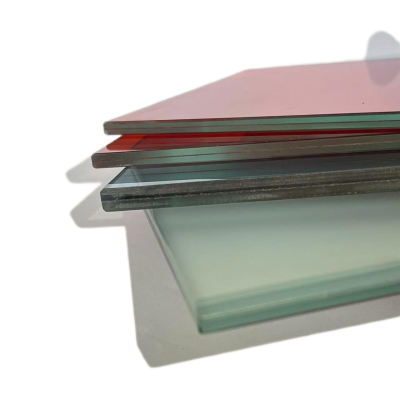Tempered Glass vs. Regular Glass: How Big Is the Difference?
Tempered Glass vs. Regular Glass: How Big Is the Difference?
Glass is all around us—in windows, mirrors, furniture, even our gadgets and kitchen appliances. But not all glass is created equal. The two most common types you’ll come across are regular glass (also called annealed) and tempered glass. They may look pretty much the same at first glance, but once you look closer, you’ll see they’re actually quite different.
Let’s break down what makes each unique, why those differences matter, and how to pick the right one for your needs.
The Basics: How They're Made
Regular glass is made by melting down a mix of silica sand, soda ash, limestone, and a few other minerals. The mixture is heated until it melts, then it’s poured or rolled into shape and slowly cooled—a process called annealing. The result is a smooth, transparent sheet of glass with good clarity, but not much strength.
Tempered glass starts out exactly the same, but after it’s shaped, it goes through an extra step: it’s reheated to about 600°C (just below its melting point) and then rapidly cooled with high-pressure air jets. This process hardens the outer surfaces while creating internal tension. The result? A much tougher piece of glass that’s built to take a hit.
There’s also chemically tempered glass, which is made by soaking the glass in a molten salt bath where smaller lithium ions replace larger sodium or potassium ions on the surface. That creates compressive stress too—but without heating the glass to high temperatures.
Strength & Safety
This is where tempered glass really stands out.
It’s around 3 to 5 times stronger than regular glass. That means it can take more impact, more pressure, and more bending before it breaks.
And if it does break? Tempered glass shatters into tiny, blunt-edged granules—less likely to cause injury. Regular glass, on the other hand, breaks into long, sharp shards that can be dangerous, especially in homes or public spaces.
That’s why tempered glass is classified as safety glass and is required by building codes in certain applications like shower doors, balcony panels, and car windows.
Heat Resistance
Tempered glass can also handle sudden temperature changes much better than regular glass. It can tolerate shifts of up to 300°C, making it ideal for places where heat is a factor—like kitchen ovens or exterior windows exposed to strong sunlight.
Regular glass is more fragile in this regard. A sudden splash of hot water on a cold glass surface, for example, could be enough to crack it.
Looks & Clarity
Here’s one area where regular glass often has the upper hand.
Because it’s cooled slowly, regular glass tends to be flatter and clearer, with minimal distortion. It’s ideal for applications where visual clarity really matters—like display cases or picture frames.
Tempered glass, thanks to the rapid cooling process, can sometimes have small surface waves or what’s called “quench marks.” They’re usually subtle, but in certain lighting or from specific angles, they might cause slight distortions when looking through the glass.
Where Each Type is Used
Regular glass is commonly used in:
l Interior windows and doors (where safety isn’t a big concern)
l Picture frames and decorative panels
l Mirrors
l Light fixtures
l Furniture with lower strength requirements
Tempered glass is the go-to for:
l Shower enclosures and bathroom doors
l Car windows (side and rear)
l Balcony railings and glass partitions
l Oven doors, stovetops, and refrigerator shelves
l Building facades, curtain walls, and skylights
Basically, anywhere safety, strength, or heat resistance is a factor, tempered glass is the better—and often required—choice.
What About the Price Tag?
Tempered glass doesn’t come cheap—and that’s no surprise. The extra steps in the production process, plus the specialized equipment and energy required, naturally push the cost up compared to regular glass.
But that higher price often reflects real value. You're paying for durability, for safety, and for peace of mind in places where accidents can happen—think balconies, sliding doors, or high-heat environments like ovens.
That said, regular glass is still a solid choice in lower-risk situations. It’s more affordable and perfectly suitable for things like photo frames, interior partitions, or decorative features where toughness isn’t critical.
In the end, it’s less about which one is “better” and more about choosing the right type of glass for the job.
Final Takeaway
Tempered and regular glass might look the same on the outside, but they’re built very differently. One is stronger, safer, and more heat-resistant; the other is more affordable, visually cleaner, and easier to work with in low-risk environments.
Choosing between them really comes down to how and where you’re going to use the glass. And now, at least, you know what makes each one tick.
Let me know if you need anything else!


































































































































































































